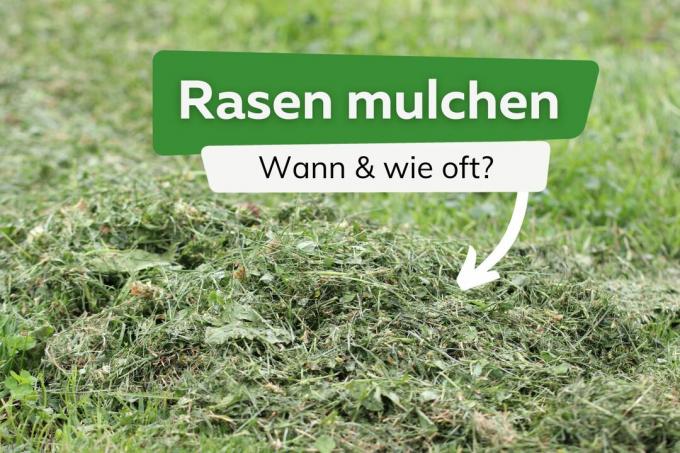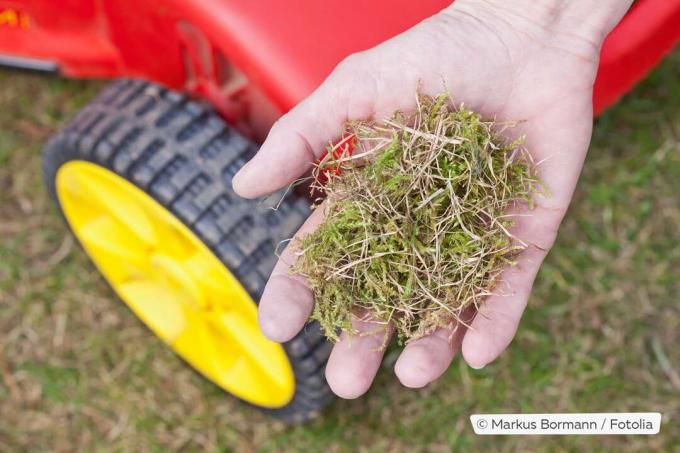
Lawn mulching is a common practice that has numerous benefits. Important here is the correct implementation with suitable materials, about which garden owners should inform themselves now.
In a nutshell
- Mulch start in early spring
- Regular mulching recommended throughout the season
- Lawn condition indicates need for mulch
Table of contents
- Frequency and best mulch time
- spring
- summer and autumn
- Recognize the need for mulch
- Suitable mulch material
- Tools and equipment needed
- frequently asked Questions
Frequency and best mulch time
Recommended mulching times are season-long and should always be after a lawn clippings take place. Shorter grass facilitates the penetration of the valuable nutrients and improves the effect on the soil structure as well as optimizing soil moisture retention.

spring
The first mulching of the lawn of the year should be done in spring be undertaken when the growing season is imminent. This gives the lawn all the important nutrients it needs for healthy, strong growth after the cold winter.
More frequent mulching is advisable, especially in spring, because sun and rain usually alternate, which leads to faster growth. It is precisely during this time that the lawn's nutrient requirements are highest, which can be covered by mulching. Mulching twice a week in spring is therefore advisable.
summer and autumn
With the onset of warmer and drier days, it is sufficient to mulch the lawn once a week - unless the lawn shows growth disorders that can be remedied by mulching.
Away The lawn should no longer be mulched in October. This is where growth and absorption of nutrients occurs slowly. In addition, the decomposition process of the mulch is slowed down. Most of the material remains on the turf surface and can limit air permeability and light penetration.

Tip: Check the weather forecast for the next few days before mulching. Dry conditions should prevail, because rain causes mulch to clump together, disrupting rapid rotting and preventing even nutrient release.
Recognize the need for mulch
If there are already unwanted changes in the lawn, mulching can be the solution. Various signs can be taken as an indication of a need for mulching, such as the following:
- sparse growth due to lack of nutrients
- lots of moss in the lawn due to compacted soil structure
- increased occurrence of weeds, in particular clover as a sign of nitrogen-poor soil
- yellow and/or brown culms, possibly due to poor soil moisture retention (soil dryness)
- Pest infestation, mostly due to weakened lawn structure

Suitable mulch material
Best is suitable lawn clippings, which rots relatively quickly and is delivered directly from the lawn mower. Furthermore, these materials can be used:
- rotted compost
- Perennial waste exclusively from healthy, pest-free plants
- straw
- leaves
- small chopped hedge and wood cuttings

Notice: Rotted, warm compost should be allowed to cool before use, otherwise the heat-sensitive grass may turn brown and burn.
Tools and equipment needed
The best way to mulch lawns is to use a so-called mulching lawn mower. This is particularly good for this, because mulching should be preceded by a lawn clipping and This lawn mower shreds the lawn clippings and lays them evenly on the surface as mulch leaves.

If other materials such as straw, leaves, or compost are used as mulch for the lawn, a pitchfork or rake will be required for distribution.
frequently asked Questions
As a rule, you can step on the mulched lawn again the next day at the latest. If it is severely weakened, you should wait a few days before committing it.
No. A normal lawn mower does not have the property of cutting up the lawn clippings so small that it breaks down easily, as does a mulching lawn mower.
Experts recommend a layer of mulch between two and five centimeters.
There is no general answer to this. However, the lawn is often damp early in the morning and should therefore only be cut later in the morning when it has dried. In summer, the mornings are also more pleasant for working for many garden owners. Mulching in the evening is not recommended when dew could form overnight, which is more common in late summer.



